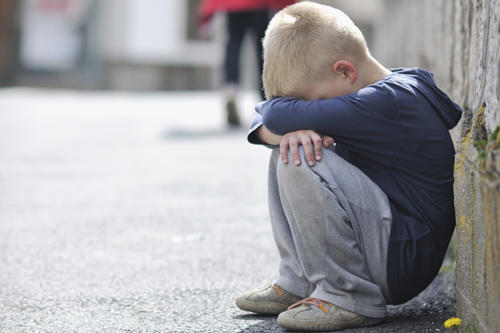
Homelessness strikes three times more families in Minnesota than it did ten years ago. For example, the Minnesota Department of Education reports that, in Minneapolis Public Schools alone, over 1,800 children in kindergarten through 12th grade were homeless in 2016. Similar trends have occurred nationwide - 1 in 30 children are homeless annually, according to one recent estimate. These children often experience tremendous cumulative stress that places their emotional, physical and developmental health in jeopardy.
At the same time, factors such as positive parenting can "buffer" adversity to help children reach their full potential in spite of the odds. However, it's been unclear how effectively these protective factors mitigate the risk of serious emotional health problems, including suicide, in youth experiencing family homelessness compared to youth with stable housing.
A new study titled “Emotional Health Among Youth Experiencing Family Homelessness”—to be published in the April issue of the American Academy of Pediatrics journal, Pediatrics, and online today—found the risk of suicide and other emotional health problems is increased among youth who have experienced family homelessness in the past year, and though developmental assets reduce this risk, some of them are less protective for homeless youth compared to housed youth. These rates are over two times higher for emotional distress, self-injury, and suicidal thinking and over three times higher for attempted suicide in the past 12 months, even after controlling for age, race, and income status.
The study from a team of University of Minnesota researchers led by Andrew Barnes, MD, MPH, an assistant professor of Pediatrics at the University of Minnesota Medical School, used data from the Minnesota Student Survey of over 112,000 8th- through 12th-graders from across the state - rural, urban, suburban - and from every walk of life and every racial and ethnic background.
“There is a false perception that most teens who are homeless are always runaways, when in fact it's actually much more common for teens who are homeless to be with one or more adult family members,” said Barnes. “I was surprised to see how many youth were homeless with their families in Minnesota - over four percent. That includes not just families with children in living "on the street," but also those in shelters and also those who were ‘doubled up’ in someone else's home because they had no place else to live.”
Among the questions, the Minnesota Student Survey asks youth if they were homeless in the past year with an adult family member, as well as sensitive questions about serious emotional health problems in the past year, such as depression, suicidal thinking, self-injury, and attempted suicide. The survey also includes many questions about developmental assets - in other words, factors that generally help youth succeed and be healthy.
The rates of serious emotional problems and developmental assets were compared between youth who were homeless with their family in the past year and youth who were never homeless, after controlling for the fact that homelessness disproportionately affects families in poverty and families of color (and interestingly, on average, there are actually no differences in rates of family homelessness between urban and rural areas in Minnesota).
“We know from other research that families experiencing homelessness quite often have had housing instability over time, in addition to severe poverty, injustice, discrimination, harassment, and marginalization,” said Barnes. “Many of the children living in these families have witnessed or been victims of violence and other trauma. Many others have had family members who've been incarcerated. So there is a piling up of stressors for many of these families that can be hard to escape or recover from, especially without a safe and secure place to call home.”
Barnes added the developmental assets the research team measured are still very much present for youth experiencing homelessness with their families. And those assets make all the difference in the world. The research team found, as others have, the majority of children who have been homeless are moving forward successfully with strong emotional health. Even so, many more teens in homeless families struggle with emotional problems than those in stable housing; and, unfortunately, strong developmental assets don't fully buffer against the perniciousness of homelessness for these youth.
“We think that stable housing is key, because our results imply that having a stable home is really foundational for children's emotional well-being,” said Barnes. “On the one hand, some factors such as good parent-child relationships and a strong academic orientation do seem to buffer emotional well-being about as well in youth experiencing family homelessness as for those with homes. On the other hand, without a place to call home, we found that some things that normally buffer kids against stress - like having a positive sense of self - just don't work as well.”
According to Barnes, services to help homeless youth may need to address social determinants of health such as stable housing and adversity in addition to building their developmental assets. Future research should focus on how the provision of safe, stable, affordable housing can support positive health outcomes for youth whose families have experienced homelessness and residential mobility.
This research was supported by grants from the National Center for Advancing Translational Sciences of the National Institutes of Health (Award Numbers UL1TR000114 and KL2TR000113) to the University of Minnesota Clinical and Translational Science Institute.
- Categories:
- Science and Technology





